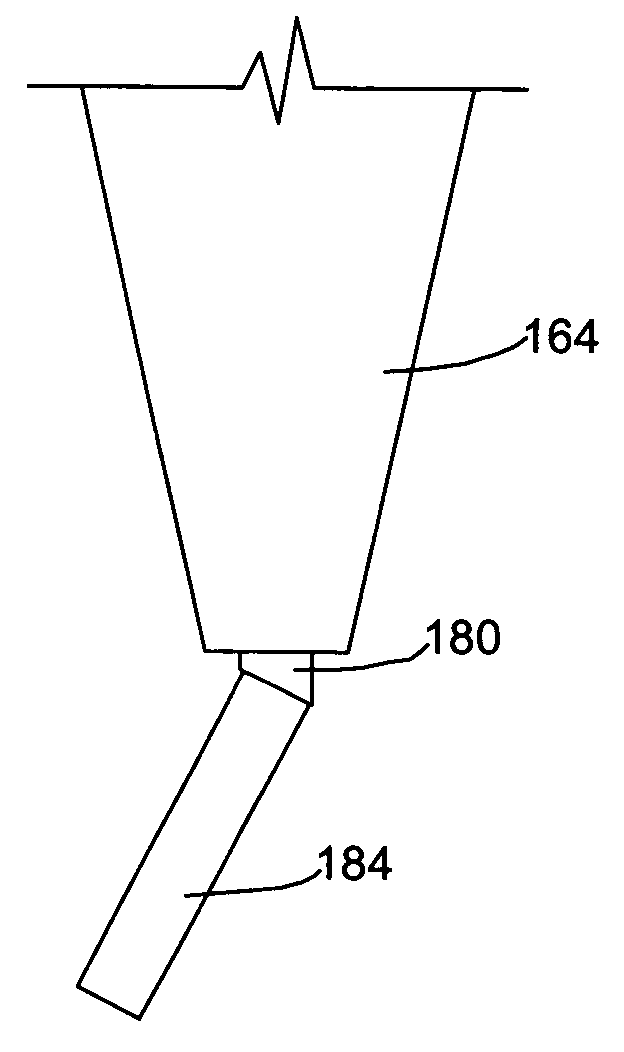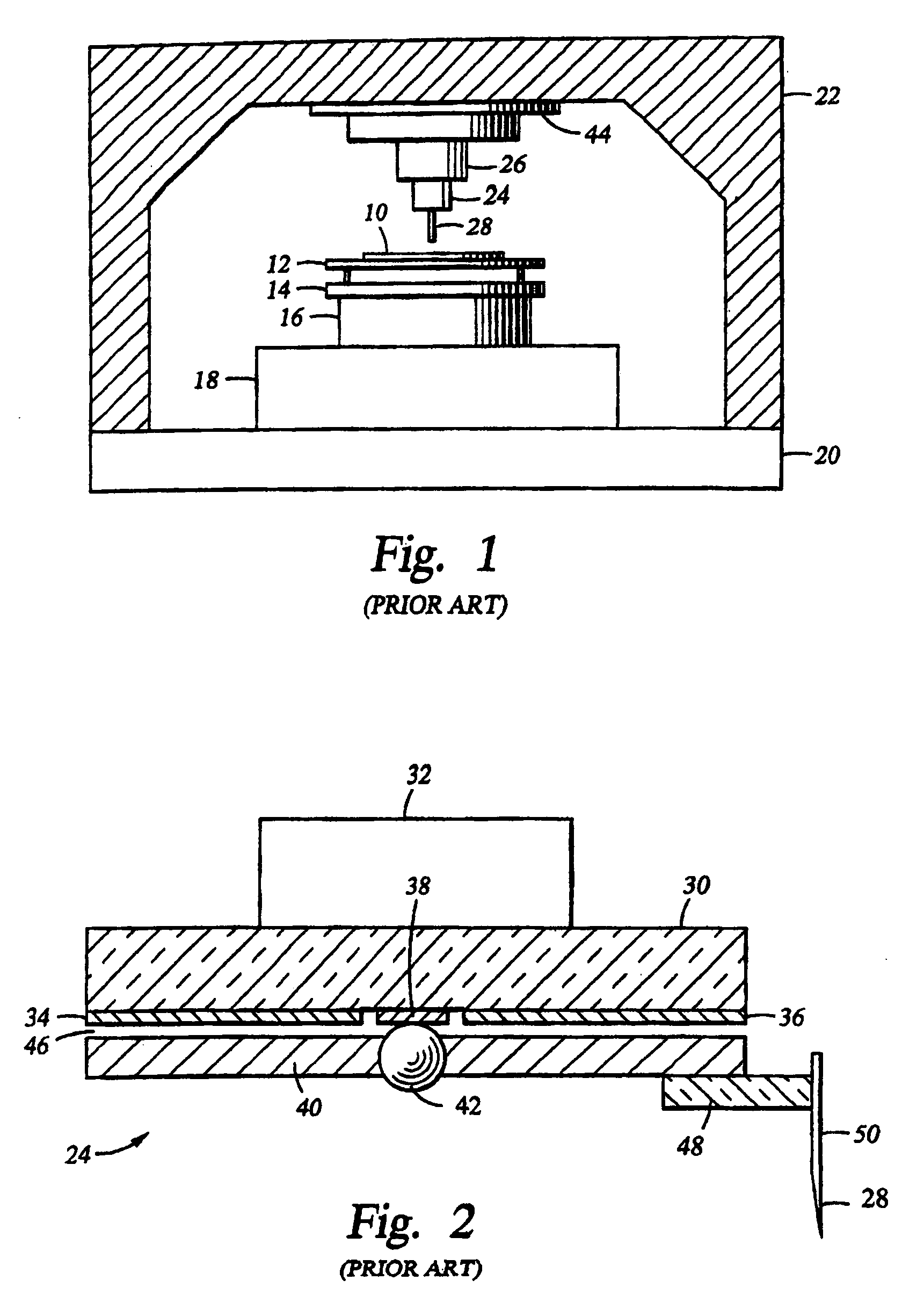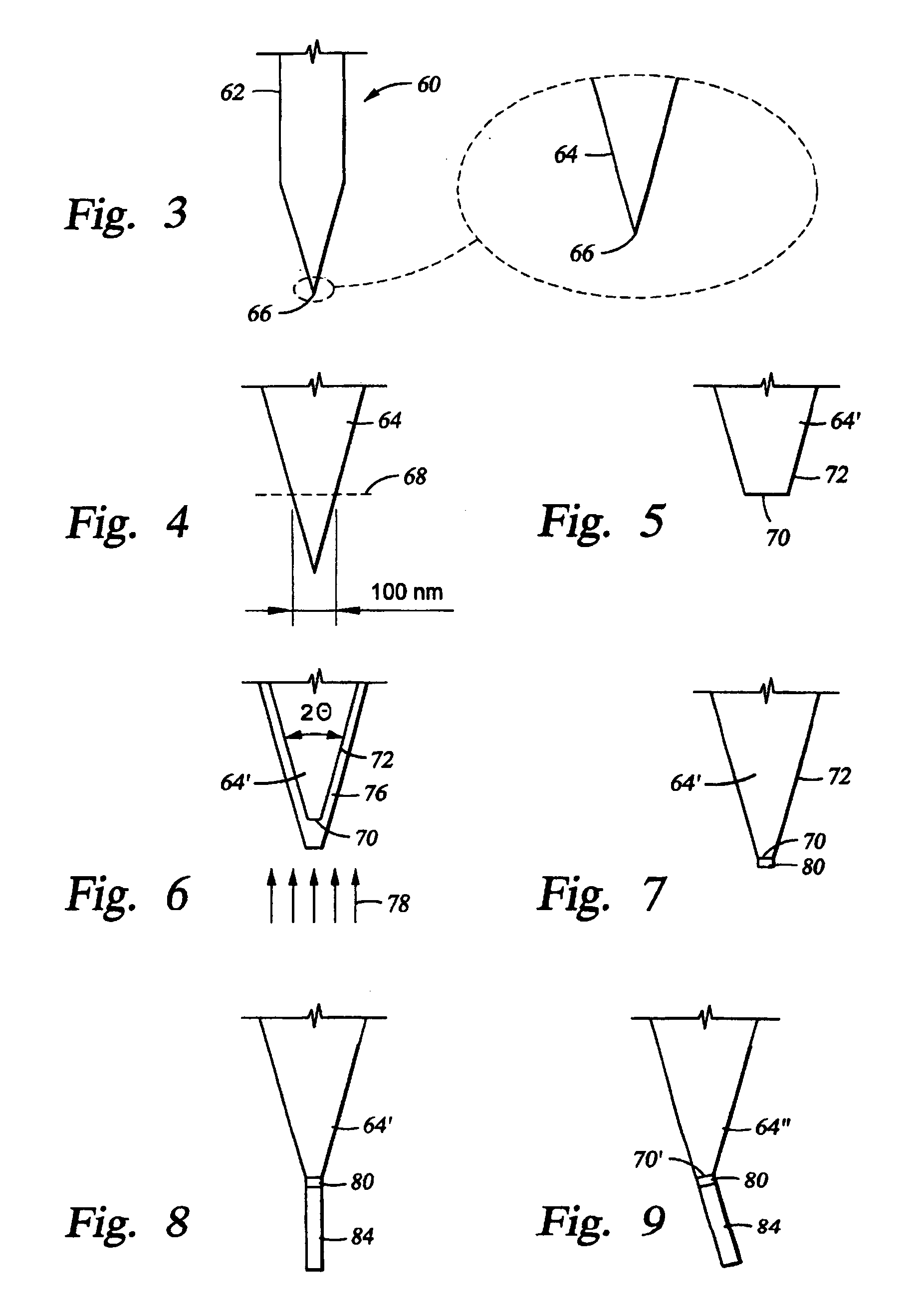Directed growth of nanotubes on a catalyst
a nanotube and catalyst technology, applied in the direction of mechanical measurement arrangements, mechanical roughness/irregularity measurements, instruments, etc., can solve the problems of difficult to obtain the more desirable cylindrical probe tip by progressive etching rather than the tapered portion alone, and the resolution of the probe is relatively coarse. , to achieve the effect of facilitating the assembly of the probe and contributing to its robustness
- Summary
- Abstract
- Description
- Claims
- Application Information
AI Technical Summary
Benefits of technology
Problems solved by technology
Method used
Image
Examples
Embodiment Construction
[0033]Preferred embodiments of the invention allow the fabrication of a single carbon nanotube, or a controlled number of nanotubes, on a narrow support structure well suited for easy attachment to a probe of an atomic force microscope (AFM) or other type of microprobe.
[0034]In one preferred embodiment of the invention described and claimed herein, a probe end is shaped to have sloping sides and a generally flat end, that is, in the shape of sloping mesa. The diameter of the mesa top is preferably in the range of 20 to 300 nm. Nickel or some other material that catalyzes the growth of carbon nanotubes is directionally deposited onto the probe end. Because of the geometry, the thickness of the deposited nickel, as measured from the underlying surface is greater on the mesa top than on the mesa sides. The nickel is then isotropically etched for a time sufficient to remove the nickel from the mesa sides but to leave sufficient nickel on the mesa top to catalyze the growth of a single c...
PUM
| Property | Measurement | Unit |
|---|---|---|
| diameter | aaaaa | aaaaa |
| widths | aaaaa | aaaaa |
| sizes | aaaaa | aaaaa |
Abstract
Description
Claims
Application Information
 Login to View More
Login to View More - R&D
- Intellectual Property
- Life Sciences
- Materials
- Tech Scout
- Unparalleled Data Quality
- Higher Quality Content
- 60% Fewer Hallucinations
Browse by: Latest US Patents, China's latest patents, Technical Efficacy Thesaurus, Application Domain, Technology Topic, Popular Technical Reports.
© 2025 PatSnap. All rights reserved.Legal|Privacy policy|Modern Slavery Act Transparency Statement|Sitemap|About US| Contact US: help@patsnap.com



